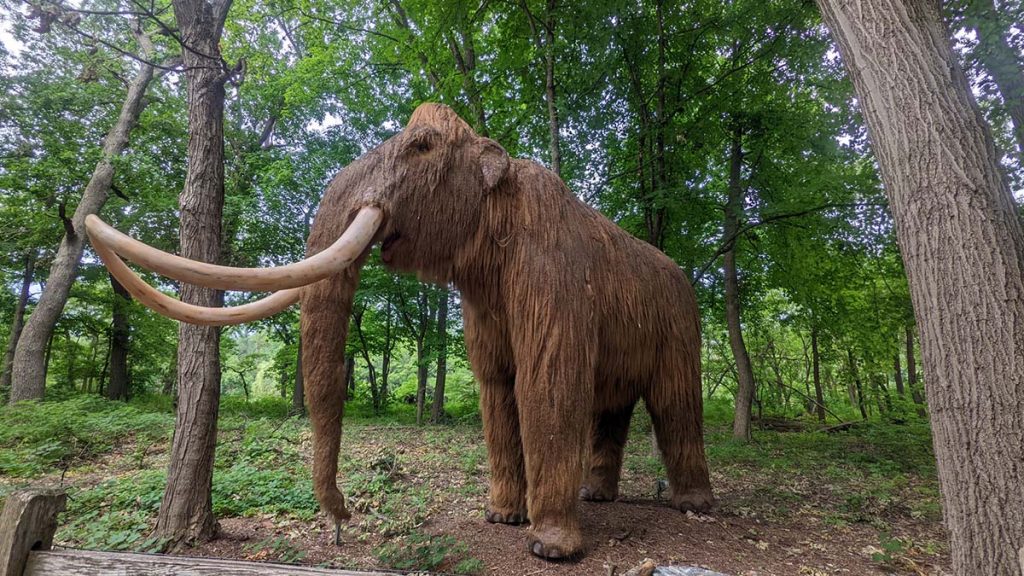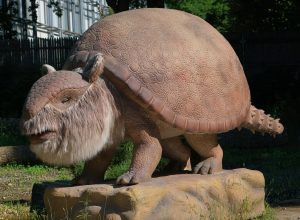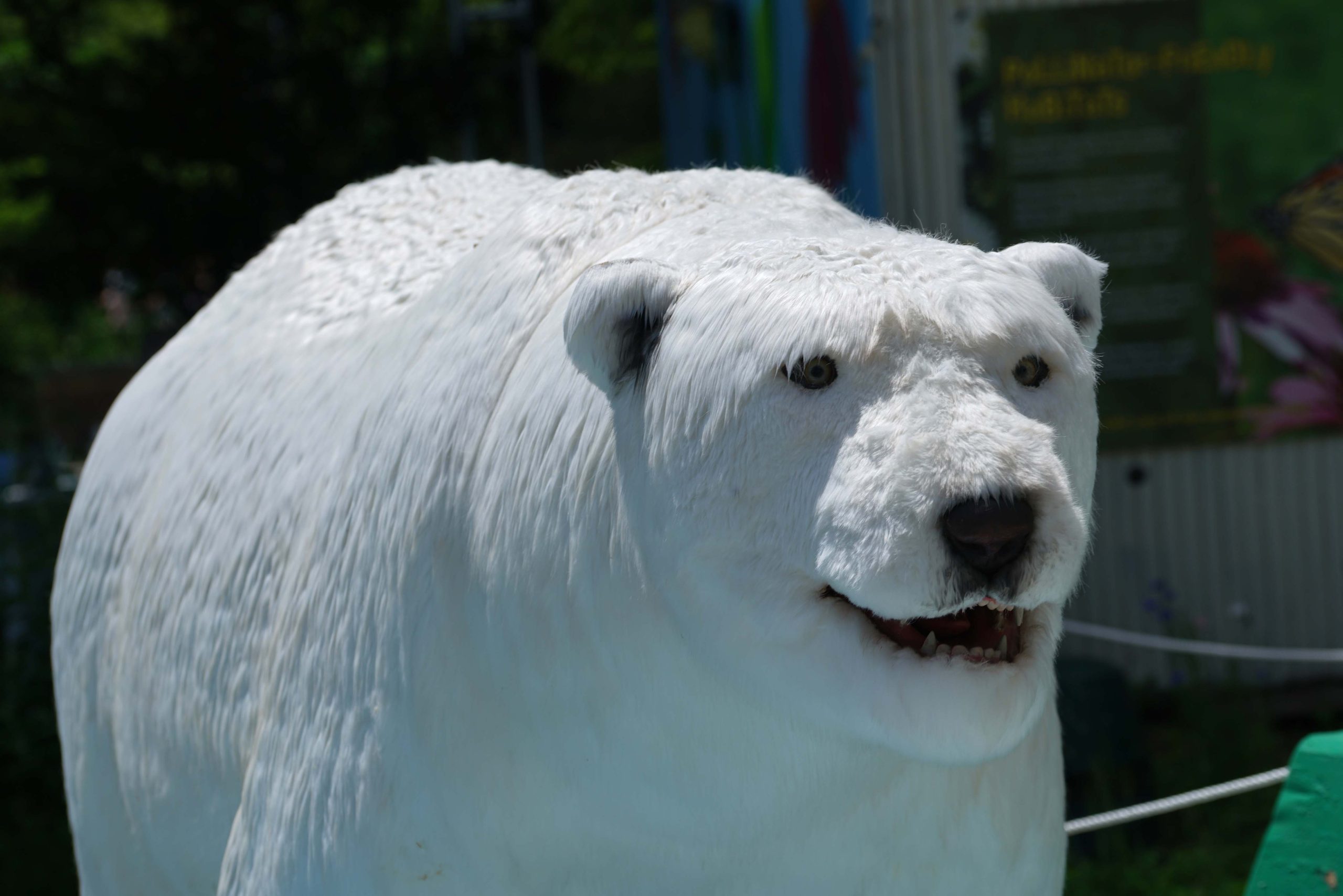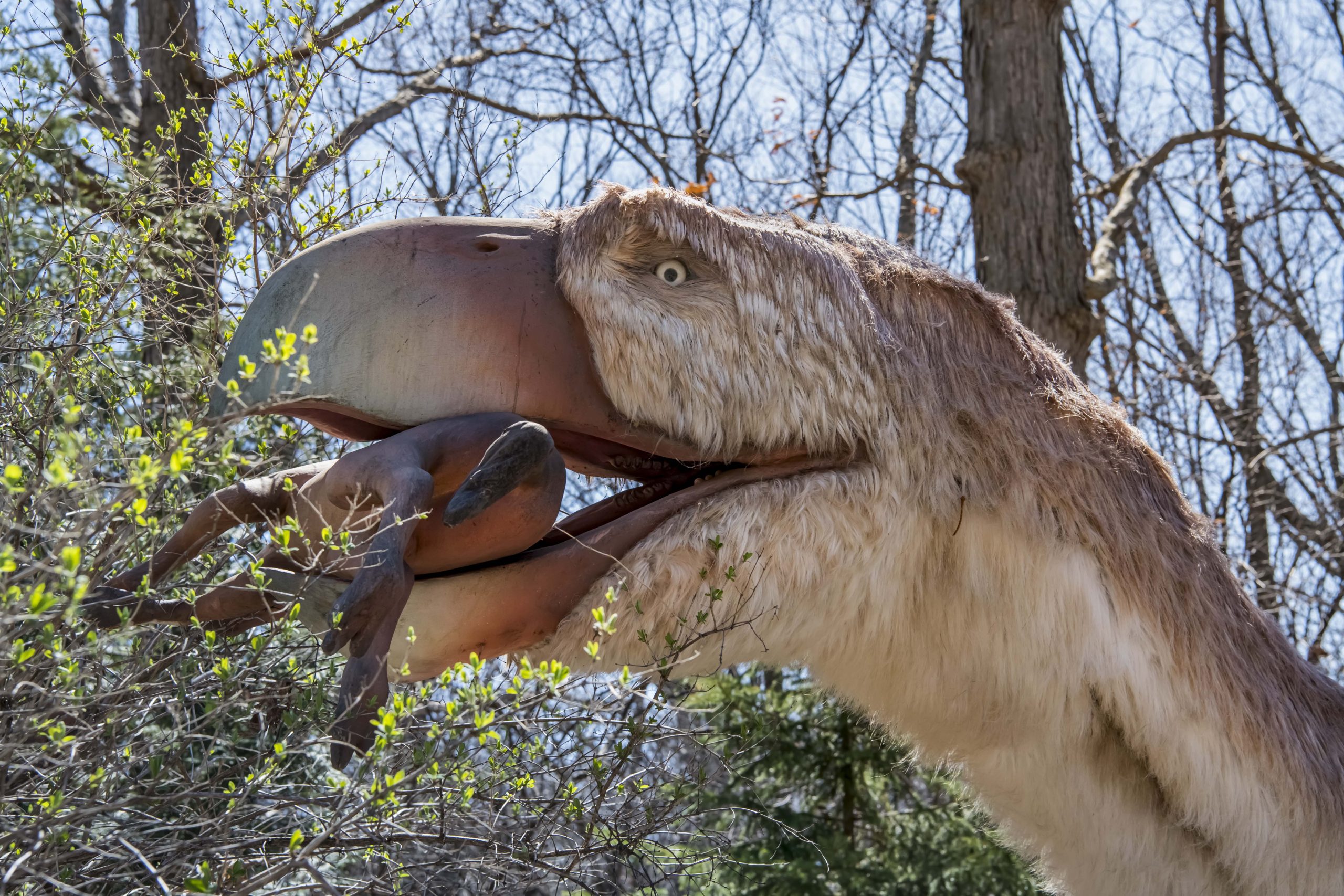
Sponsored by Sendik’s Food Market
Open May 20 – Oct. 8, 2023
A magnificent menagerie of giant mammals awaits guests this summer! The now-extinct animals once roamed the world during the Ice Ages – some dating back 2.4 million years. Meet the animatronic life-size creatures as they move, rumble, and roar in their outdoor forest.
$4 – Adults
$4 – Children
 As recently as five thousand years ago, the Ice Age time periods included these giant animals called megafauna, like saber-toothed tigers, woolly mammoths, and short-faced bears, many of which guests can see in this dynamic display!
As recently as five thousand years ago, the Ice Age time periods included these giant animals called megafauna, like saber-toothed tigers, woolly mammoths, and short-faced bears, many of which guests can see in this dynamic display!
Trek through the Zoo’s forest and marvel as extinct creatures are brought back to life. Breathing, roaring, gnashing teeth, turning their gaze, and flicking their tails — these mighty beasts can’t wait to meet visitors. Get face to face and then visit some of the giants’ modern-day counterparts at the Zoo!
Some of the Magnificent Mammals featured:
Through the exhibit, guests will build empathy for wildlife and humans affected by environmental changes, while learning how humans can help positively impact the natural world.
Be sure to visit the Ice Age on May 21, June 5, July 8, and Aug. 19 for expanded content with fun and educational activities.
Don’t get left out in the cold! Take a Journey to the Ice Age, located at the Milwaukee County Zoo. Tickets can be purchased on-site or in advance.
Journey to the Ice Age is located behind the Small Mammals building and is open during Zoo hours:


© 2024 Milwaukee County Zoo. All Rights Reserved | Privacy Policy